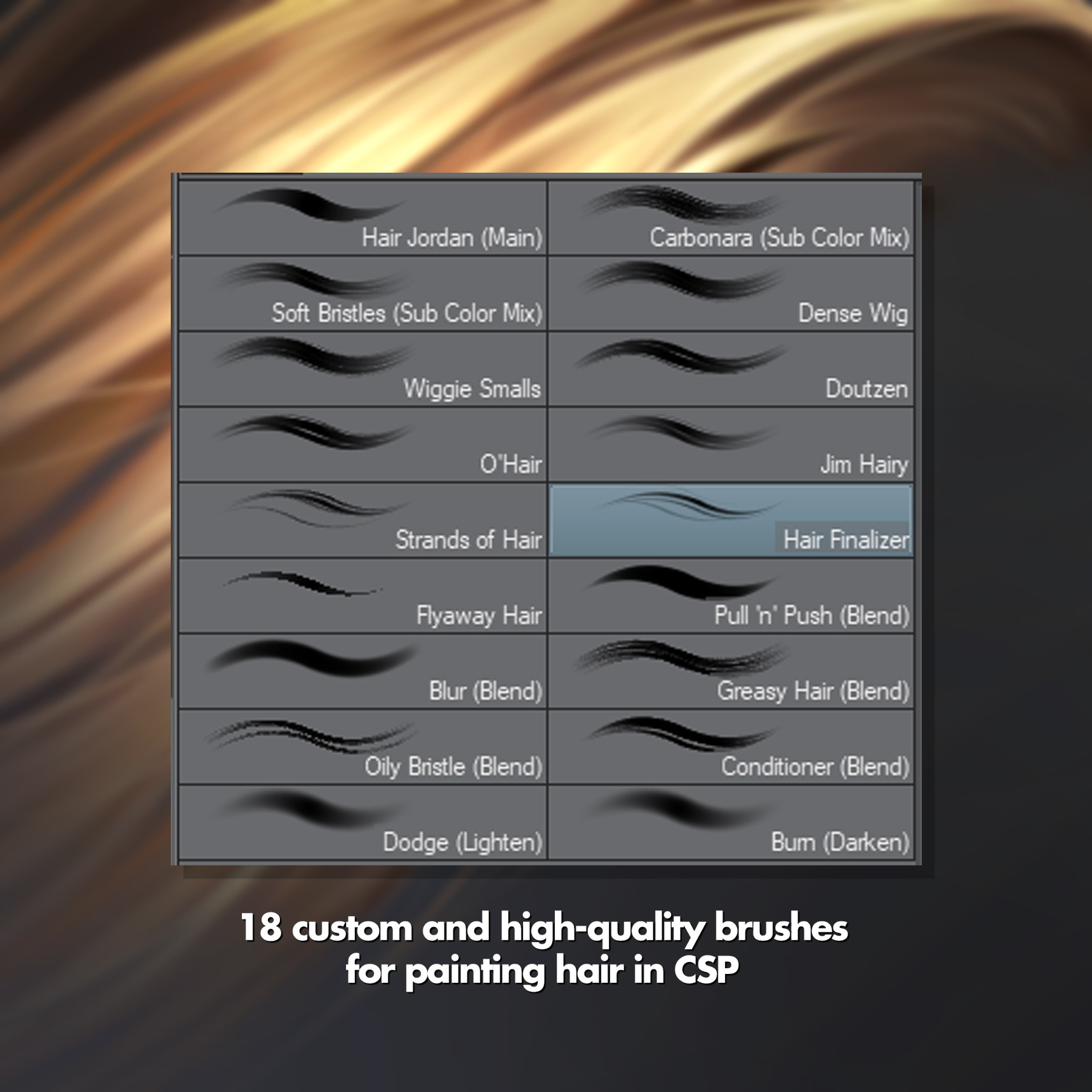

Skipping ahead, here’s what ended up being the final palette once the piece was done. Thankfully, her outfit colors are also well-coordinated.Īll others in the painting will be made by either changing these colors’ saturation and value (but not hue) and mixing them. I played with the settings until I got one with a medium brown, a blue for the shirt, a green for the background, and a purple for the headband.
CLIP STUDIO PAINT BRUSHES SKIN
Hearkening back to The Nuts and Bolts of Color Theory, I used an eyedropper sample of her skin to generate a palette with Adobe Color. Layer > New Fill Layer > Set it to 50% gray I typically start with 50% gray, then cover it with other neutral colors during the “flatting” stage. It’s far easier to start with a middle tone and paint on highlights and shadows, than to start at the brightest value and paint literally everything else. One of the most common pieces of digital art advice you’ll find is to start from a medium-toned canvas instead of white. I’m using the Darker Pencil, but it doesn’t matter which tool you use. Many more experienced painters prefer to work without lines or flats, and their power is awe-inspiring, but this can save you work. Then I draw some very thin lineart, so I don’t have to worry about reshaping the features as I keep painting. You can use any color, but mine will be white. I add a paper layer: a background fill layer that can’t be moved or erased. If you want a perfect likeness, take a photo. Some proportions are exaggerated-slightly wider smile and eyes-since copying every detail of the photo directly tends to result in more muted expressions than you might want in a drawing. it’s just a placeholder for edges that are going to be much softer, so I’m just noting where those creases are, not how strong they’ll be. If this was going to be a line drawing, I wouldn’t have gone into even this much detail: Using hard lines for every facial crease makes the subject look older. The pencil sketch was fairly close for being done from observation with no measuring, but this gets it a bit closer: I’ll be painting u/Inuwa-Angel from Reddit, with thanks for her portrait request and permission to use it for this article.Īfter starting with a paper sketch, I use the polygonal lasso and move tools to make some corrections. Anti-overflow: Lets you constrain your painting area to a separate “reference layer.”.Starting and Ending: Allows you to set your brush to taper, fade, or do something weird at both ends of each stroke.Brush stroke: Changes the length of the “tail” left after you raise the pen.Post correction: Smooths your curves and sharpens your angles after each stroke.Border of Watercolor: Adds darker edges to your brush.Texture: Adds a texture to your brush from the “image materials” library.Stroke: Changes the gap between your the instances of your brush’s pattern.Spraying effect: Same as photoshop’s “scattering:” turns your brush into dots.This was on by default, but I turned it off because it adds another layer of complexity. Mix Ground Color: Causes your brush to smear the existing color, like watercolor paint, or wet paint in real life.Blending Mode: Works just like layer modes, causing different color interactions and changes to the existing image.Here are some other settings I won’t be using for this piece, but are important to know: I used to set it to half that when I painted on an older Intuos, but the newer Cintiqs are more sensitive. With some brushes, lowering the density will create a “dry brush” effect, but not this one since it doesn’t have that texture. I use that to control the “paint” thickness instead of the opacity tool since it’s less likely to cause “overlaid stripes.” And mainly adjusting only the brush size, hardness, and brush density-the equivalent of Photoshop’s flow. I’ll be doing this entire piece with the default Oil Paint brush. Everything else can be adjusted in the Sub Tool Detail window. Brush SettingsĪll CSP’s built-in brushes essentially work the same, the main differences being between the shapes and textures. It also has several different color pickers, instead of Photoshop’s variations on one, that allow for different types of customization. It excels at lineart in comparison, but its painting brushes-while harder to learn initially-are very satisfying to use. It has a stronger brush engine with better “handling” and stabilization, better drawing and correction features, and in some ways, more control over tool customization. It’s designed specifically for drawing and painting, instead of those being side uses for a catchall imaging program. We recently had a handy article on inking with Clip Studio Paint, so here’s one on doing the thing that’s in the program’s title.


 0 kommentar(er)
0 kommentar(er)
